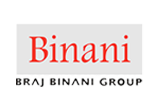Indonesia trade Data
25-Jan-2024

As we enter the dynamic world of global trade in 2024, one country stands out as a critical export market. Indonesia's economy is a mixed economy with trends; it is one of the world's emerging market economies and the largest in Southeast Asia. Indonesia, an upper-middle-income country and G20 member, is characterized as newly industrialized. With its diverse economy, strategic geographical location, and rising customer base, Indonesia has become a significant player in international trade. In this blog post, we'll examine why Indonesia is a valuable export market and the insights supplied by Indonesia trade data.
Indonesia's economic outlook for 2024 appears promising. The government is dedicated to creating a solid business environment, and critical indicators and strategic measures are expected to propel economic growth. The economic forecast for 2024 is likely to unfold in two separate scenarios: initial problems, followed by a more favorable environment near the conclusion.
Indonesia's economic growth is predicted to accelerate once the government's transitional processes are completed by the end of the year.
According to Indonesia Trade Data, Indonesia projects Indonesia's GDP growth to be between 4.7% and 5.5% in 2024, with inflation at 2.5%±1%. Despite commodity challenges, Indonesia's GDP growth is expected to remain over 5% in 2023. While domestic demand is strong, the global situation is unclear, making the picture for 2024 uncertain.
Indonesia, the world's fourth-most populated country and Southeast Asia's largest economy is more than just a tourism destination. It is expected to become a prime market for clever exporters by 2024, with several features making it an unrivaled commercial opportunity. Let's understand why Indonesia is an emerging nation for exporters and explore the Indonesia Import Export Data.
Strong GDP Growth: Based on Indonesia trade data, Indonesia's GDP is expected to expand by 5.3% in 2024, making it one of the fastest-growing countries in the region. This economic strength leads to more consumer spending and demand for various goods and services.
Rising Middle Class: The Indonesian middle class is quickly expanding, with an estimated 120 million people by 2025. It leads to a growing proportion of consumers with disposable means and ambitions for improved living standards, creating an ideal environment for premium and creative products.
Location: Indonesia's central location in Southeast Asia is an ideal distribution and logistics hub. Accessing its thriving market opens doors to the region's 670 million customers.
Trade Agreements: Indonesia has free trade agreements with several nations, including the ASEAN bloc and significant economies such as China and Japan, which provide exporters with discounted tariffs and lower trade barriers.
Indonesia's exports are increasingly aimed at neighboring Southeast Asian countries, capitalizing on regional trade agreements and proximity. It allows exporters to reach a larger market within the region.
According to Indonesia trade data, 2022 exports totaled US$291.98 billion, a 26.07 percent increase over the previous year. Imports in 2022 were valued at US$237.52 billion, up 21.07 percent yearly.
However, according to Indonesia export data, the total exports hit $23.8 billion in December 2022. Furthermore, exports in April 2023 fell to US$ 19.29 billion, a 15-month low, from US$ 23416.90 million in March 2023.
The increasing expansion of e-commerce in Indonesia is influencing export trends. Products for online sales are in great demand, opening up chances for exporters with solid online presence and logistics skills. Moreover, you can explore our market research report anytime if you need reliable Indonesian trade data.
Indonesia import data and the 2024 prediction show a flourishing market with prospects for overseas suppliers. Indonesia's import volume is expected to expand moderately in 2024 by 3% to 5%. It points to a stable and rising market for international goods and services.
Based on Indonesia import data by country, imports to Indonesia climbed by 1.27 percent annually to US$ 18.44 billion in January 2023. However, imports to Indonesia began to fall in the following months, missing market expectations. While Indonesia is well-known for its palm oil, rubber, and textile exports, it also imports a wide range of goods to fuel its economy.
Below is a list of Indonesia top 10 import products:
Oil and other mineral fuels account for $44.9 billion (18.9% of total imports).
Computer and electrical equipment cost $31.6 billion.
Electrical equipment and machinery cost $26.4 billion.
Steel and iron cost $13.9 billion.
Materials composed of plastic: $11.1 billion
Transportation costs $9.5 billion.
However, Indonesia trade data must be analyzed thoroughly to understand the Indonesian market's potential. Our platform gives valuable information about the sorts of products in demand, the volume of imports, product-wise HS codes, and the market's essential competitors.
To summarise, Indonesia's standing as a prime export market in 2024 is supported by strong economic development, strategic location, and a growing middle class. Exporters can modify their strategies to match market demands by drawing on insights from Indonesia import statistics. There are several prospects for those willing to discover and navigate the Indonesian market, whether in the industrial, electronics, energy, construction, or automotive industries.
As exporters prepare to capitalize on the opportunities given by Indonesia, keeping updated about changing market dynamics through import data becomes critical. Indonesia's attraction as a key market is more than a snapshot; it demonstrates the archipelagic nation's long-term growth and potential for enterprises worldwide. However, if you need assistance regarding Indonesia trade data, you can connect with our dedicated experts anytime!
The Indonesian economy has continually developed at an outstanding rate, exceeding 5% in recent years. This trend is projected to continue, making it an attractive investment destination.
Indonesia's most valuable export is palm oil, a versatile vegetable oil used in food, cosmetics, and biofuels. As per Indonesia exporters data, palm oil exports totaled more than $31 billion in 2022, demonstrating the industry's major contribution to the national economy.
Indonesia has abundant natural resources, such as crude oil, natural gas, tin, copper, and gold. Indonesia major imports include machinery and equipment, chemicals, gasoline, and food. Major exports include oil and gas, electrical goods, plywood, rubber and textiles.
The digital economy is one of Indonesia's fastest developing sectors. E-commerce, fintech, and online entertainment are all enjoying rapid development as internet access and smartphone adoption increase. This opens up significant potential for technology businesses and investors.










